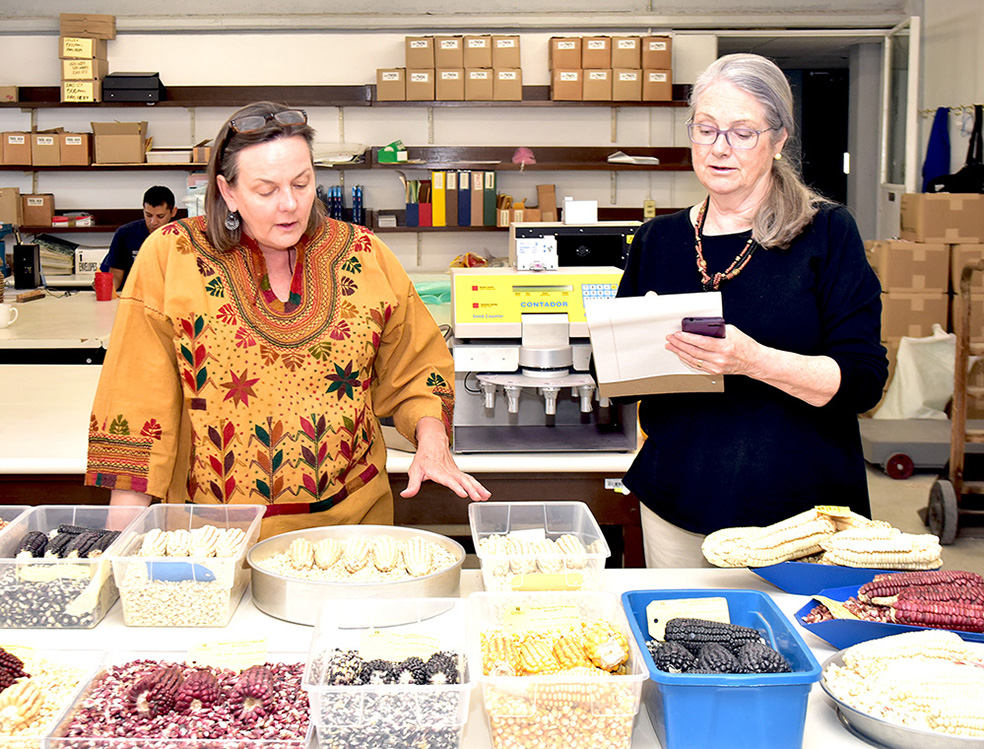Nutrition, health and food security
As staple foods, maize and wheat provide vital nutrients and health benefits, making up close to two-thirds of the world’s food energy intake, and contributing 55 to 70 percent of the total calories in the diets of people living in developing countries, according to the U.N. Food and Agriculture Organization. CIMMYT scientists tackle food insecurity through improved nutrient-rich, high-yielding varieties and sustainable agronomic practices, ensuring that those who most depend on agriculture have enough to make a living and feed their families. The U.N. projects that the global population will increase to more than 9 billion people by 2050, which means that the successes and failures of wheat and maize farmers will continue to have a crucial impact on food security. Findings by the Intergovernmental Panel on Climate Change, which show heat waves could occur more often and mean global surface temperatures could rise by up to 5 degrees Celsius throughout the century, indicate that increasing yield alone will be insufficient to meet future demand for food.
Achieving widespread food and nutritional security for the world’s poorest people is more complex than simply boosting production. Biofortification of maize and wheat helps increase the vitamins and minerals in these key crops. CIMMYT helps families grow and eat provitamin A enriched maize, zinc-enhanced maize and wheat varieties, and quality protein maize. CIMMYT also works on improving food health and safety, by reducing mycotoxin levels in the global food chain. Mycotoxins are produced by fungi that colonize in food crops, and cause health problems or even death in humans or animals. Worldwide, CIMMYT helps train food processors to reduce fungal contamination in maize, and promotes affordable technologies and training to detect mycotoxins and reduce exposure.
CIMMYT upgrades Pakistan’s national germplasm collection and distribution facility
 Nutrition, health and food security
Nutrition, health and food security
Balancing economy and ecology: agriculture vs. nature
 Climate adaptation and mitigation
Climate adaptation and mitigation
Reconciliation of the right to develop and environmental protection must move beyond global dialogue and be put into practice.
Agriculture can help the world meet climate change emission targets
 Climate adaptation and mitigation
Climate adaptation and mitigation
Climate-smart agriculture could be the solution for farmers to both cope with the impacts of climate change and reduce emissions.
African maize farmers get support to mitigate impact of poor soils
 Gender equality, youth and social inclusion
Gender equality, youth and social inclusion
As the global community marks World Soil Day, African smallholder farmers are contending with low yields due to low-fertility soils prevalent in most parts of sub-Saharan Africa, affecting food security for 300 million people.
Of maize farmers, coming calves, waxing oxen, and comely camels
 Capacity development
Capacity development
The gospel of ngamia. When despite drought, maize becomes a ‘source’ of farm labor and protein, with surplus sold to purchase a calf: “I got so much harvest, and yet I planted this seed very late, and with no fertilizer.”
Food historian Rachel Laudan visits CIMMYT
 Nutrition, health and food security
Nutrition, health and food security
Food historian Rachel Laudan, who is currently conducting maize research, visits CIMMYT to interact with maize scientists to better understand maize in Mexico.
CIMMYT scientist Ravi Singh receives honor for wheat genetics, breeding
 Nutrition, health and food security
Nutrition, health and food security
Scientist Ravi Singh is named a Fellow of the American Association for the Advancement of Science for distinguished contributions to the field of agricultural research and development.
Reviewing progress and impacts of two core maize projects as they wind up work in sub-Saharan Africa
 Climate adaptation and mitigation
Climate adaptation and mitigation

